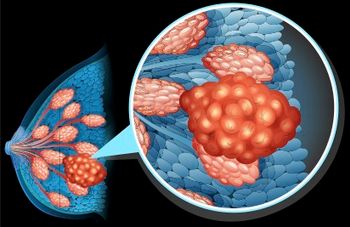
Which Breast Cancer Risk Models Are Most Accurate?
Researchers conducted a validation study of four breast cancer risk models currently in use.
Breast cancer risk models that incorporate multigenerational family history, such as the BOADICEA and IBIS models, fare better at predicting risk than those that do not, according to a new study.
“Models of breast cancer risk based on established risk factors are used to inform decisions about primary prevention,” wrote study authors led by
A number of breast cancer risk models are currently in use, so researchers conducted a validation study of four of these models: the International Breast Cancer Intervention Study model (IBIS); the Breast and Ovarian Analysis of Disease Incidence and Carrier Estimation Algorithm model (BOADICEA); the BRCAPRO model; and the Breast Cancer Risk Assessment Tool (BCRAT, also referred to as the Gail model). They used data from the 18,856 women included in the Breast Cancer Prospective Family Study Cohort; the results were
After a total median follow-up period of 11.1 years, 619 of 15,732 included women were diagnosed with breast cancer (4%). Both the IBIS and BOADICEA models were well calibrated, with a ratio of expected cases to observed cases of 1.03 and 1.05, respectively. Meanwhile, the BRCAPRO and BCRAT models underestimated the risk, with ratios of 0.59 and 0.79, respectively. The estimated C-statistics for the IBIS, BOADICEA, BRCAPRO, and BCRAT models were 0.71, 0.70, 0.68, and 0.60, respectively.
In a subanalysis based on BRCA mutation status, the BOADICEA, IBIS, and BCRAT models were similar, with ratios close to 1 for BRCA-negative women, while the ratio of expected to observed cases with the BRCAPRO model was 0.53. In BRCA-positive women, BOADICEA and IBIS again performed best.
“Our results suggest that models that include multigenerational family history, such as BOADICEA and IBIS, have better ability to predict breast cancer risk, even for women at average or below-average risk of breast cancer,” the authors concluded. “Our study shows that even though some pedigree models are well calibrated, they overpredict risk for women in the upper quantiles of familial risk and underpredict risk for those in the lower quantiles.”
In an
They added that user-friendly interfaces for risk assessment that are tailored to specific clinical scenarios could make the use of complicated risk models easier. “Such an approach would also address the challenge of choosing from the available models without a clear understanding of the pros and cons of each one,” they wrote.
Newsletter
Stay up to date on recent advances in the multidisciplinary approach to cancer.






















































































